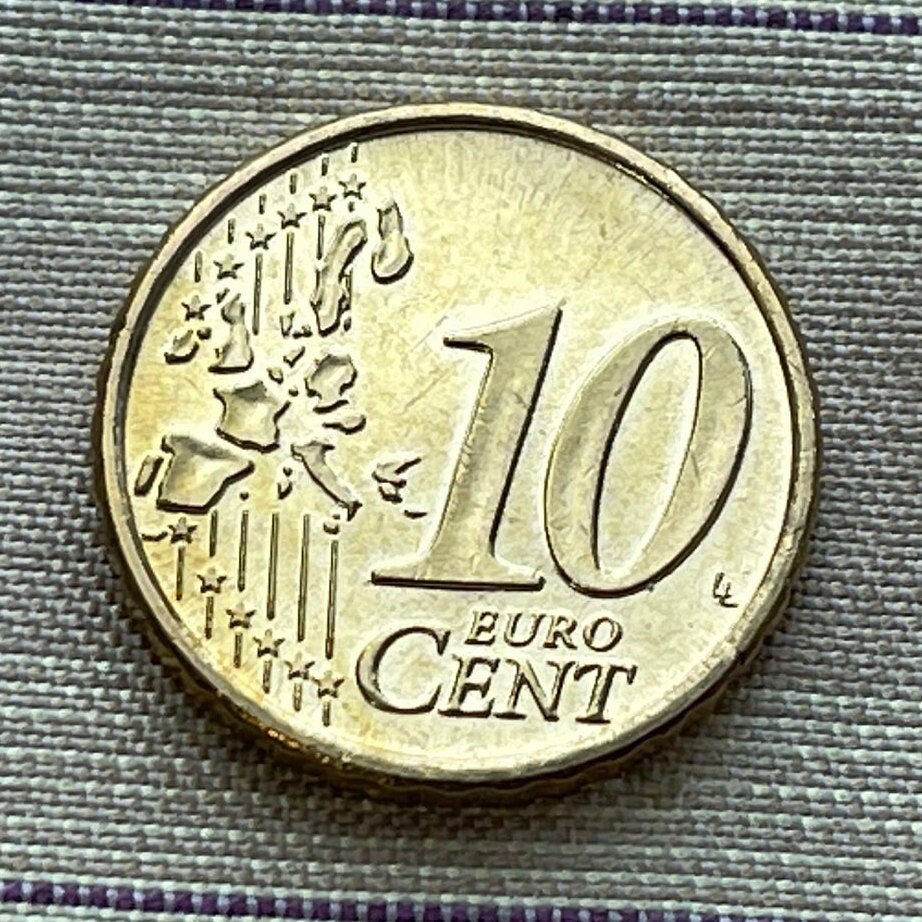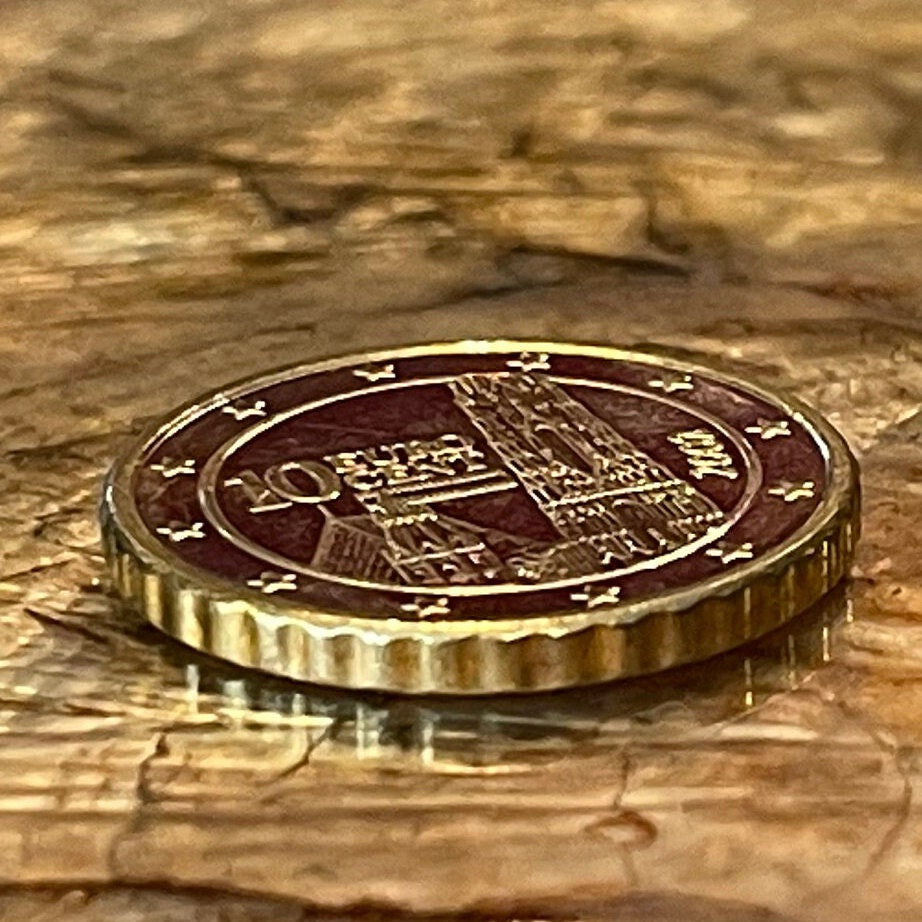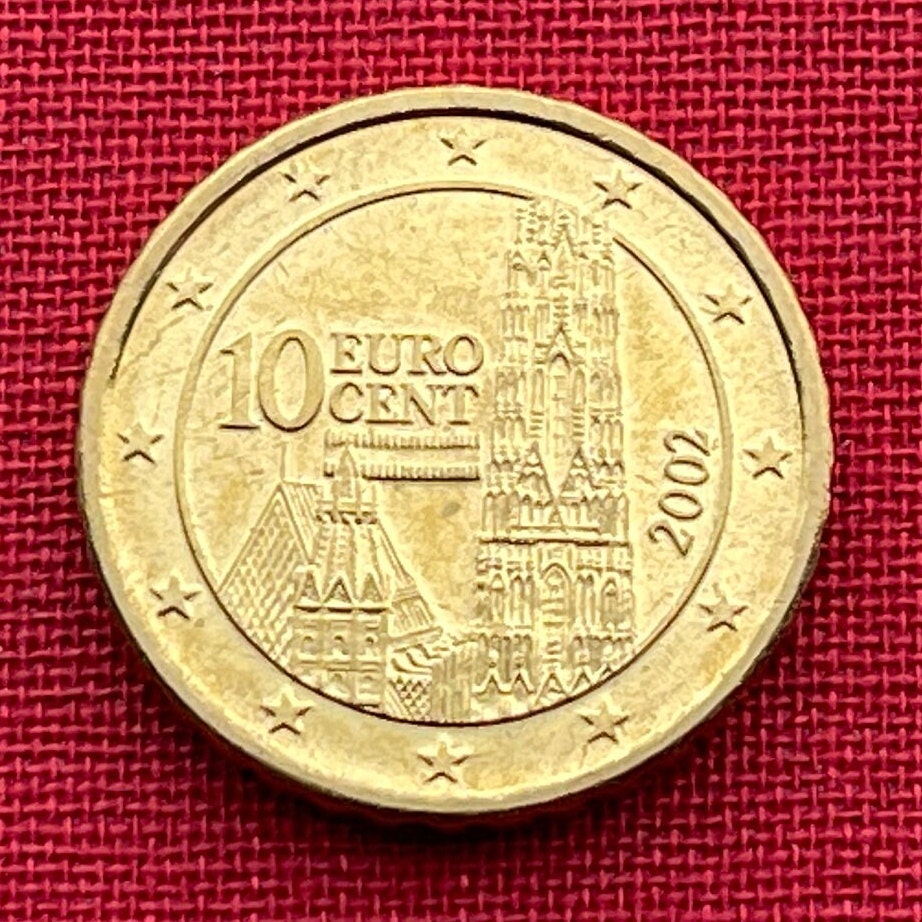elemintalshop
St. Stephen's Cathedral Towers 10 Euro Cents Austria Authentic Coin Money for Jewelry and Crafts (Gothic) (Vienna) (Stephansdom) (Steffl)
St. Stephen's Cathedral Towers 10 Euro Cents Austria Authentic Coin Money for Jewelry and Crafts (Gothic) (Vienna) (Stephansdom) (Steffl)
Couldn't load pickup availability
St. Stephen's Cathedral Towers 10 Euro Cents Austria Authentic Coin Money for Jewelry and Crafts Making (Gothic) (Vienna) (Stephansdom) (Steffl)
Obverse: St. Stephen's Cathedral, one of the jewels of Viennese Gothic architecture, is accompanied with the face value and heraldic hatchings representing the Austrian flag and is encircled by the twelve stars of Europe
Lettering: 10 EURO CENT
Reverse: A map, next to the face value, symbolizes the gathering of the fifteen nations of the European Union
Lettering: 10 EURO CENT
Edge: Indented
Features
Issuer Austria
Period Second Republic (1945-date)
Type Standard circulation coin
Years 2002-2007
Value 10 Euro Cent
0.1 EUR = 0.12 USD
Currency Euro (2002-date)
Composition Nordic gold
Weight 4.1 g
Diameter 19.75 mm
Thickness 1.93 mm
Shape Round
Orientation Medal alignment ↑↑
Number N# 60
References KM# 3085, Schön# 280
Wikipedia:
St. Stephen's Cathedral (more commonly known by its German title: Stephansdom) is the mother church of the Roman Catholic Archdiocese of Vienna and the seat of the Archbishop of Vienna, Christoph Cardinal Schönborn, OP. The current Romanesque and Gothic form of the cathedral, seen today in the Stephansplatz, was largely initiated by Duke Rudolf IV (1339–1365) and stands on the ruins of two earlier churches, the first a parish church consecrated in 1147. The most important religious building in Vienna, St. Stephen's Cathedral has borne witness to many important events in Habsburg and Austrian history and has, with its multi-coloured tile roof, become one of the city's most recognizable symbols.
Standing at 136 meters (446 ft) tall and affectionately referred to by the city's inhabitants as "Steffl" (a diminutive form of "Stephen"), St. Stephen's Cathedral's massive south tower is its highest point and a dominant feature of the Vienna skyline. Its construction lasted 65 years, from 1368 to 1433. During the Siege of Vienna in 1529 and again during the Battle of Vienna in 1683, it served as the main observation and command post for the defence of the walled city, and it even contains an apartment for the watchmen who, until 1955, manned the tower at night and rang the bells if a fire was spotted in the city. At the tip of the tower stands the double-eagle imperial emblem with the Habsburg-Lorraine coat of arms on its chest, surmounted by a double-armed apostolic cross, which refers to Apostolic Majesty, the imperial style of kings of Hungary.[citation needed] This emblem replaced earlier crescent and the six-pointed star emblem. The original emblem, as well as a couple of later ones, today can be seen at the Vienna City Museum.
The north tower was originally intended to mirror the south tower, but the design proved too ambitious, considering the era of Gothic cathedrals was nearing its end, and construction was halted in 1511. In 1578, the tower-stump was augmented with a Renaissance cap, nicknamed the "water tower top" by the Viennese. The tower now stands at 68 metres (223 ft) tall, roughly half the height of the south tower.[citation needed]
The main entrance to the church is named the Giant's Door, or Riesentor, possibly referring to the thighbone of a mammoth that hung over it for decades after being unearthed in 1443 while digging the foundations for the north tower, or else to the funnel shape of the door, from the Middle High German word risen, meaning 'sink or 'fall'. The tympanum above the Giant's Door depicts Christ Pantocrator flanked by two winged angels, while on the left and right are the two Roman Towers, or Heidentürme, that each stand at approximately 65 metres (213 ft) tall. The name for the towers derives from the fact that they were constructed from the rubble of old structures built by the Romans (German Heiden meaning heathens or pagans) during their occupation of the area. Square at the base and octagonal above the roofline, the Heidentürme originally housed bells; those in the south tower were lost during World War II, but the north tower remains an operational bell tower. The Roman Towers, together with the Giant's Door, are the oldest parts of the church.
As Vienna's landmark, the St. Stephen's Cathedral is featured in media including films, video games, and television shows. These include The Third Man and Burnout 3. The cathedral is also depicted on the Austrian 10 cent euro coins and on the packaging of the Manner-Schnitten wafer treat. The Archdiocese of Vienna allowed the Manner company to use the cathedral as its logo in return for funding the wages of one stonemason doing repair work on the cathedral.
Share



















